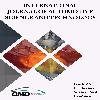Design of Fuzzy Logic Supported Car Driver Control System
Being one of the most basic needs of human life, vehicles are one of the basic building blocks of the transportation sector. Since automobiles are highly preferred, they cause intensity in daily traffic and the need for human control increases accordingly. Approximately 88% of traffic accidents occur due to driver-related errors and approximately 1.1% of the accidents are mortal. Although there are products and studies aimed to prevent human defects technologically, such as semi-autonomous, autonomous driving systems, and driving safety components, studies to improve people's driving abilities are rare. In this study, first of all, the conditions regarding proper and correct vehicle drive in traffic are examined. Then, the sensor and sensor systems that can control the conditions of frequently used cars are investigated. Fuzzy logic decision making model of the sensors and subsystems used in vehicles were designed and simulated in order to develop a car driver control system (CDCS) used to provide a safety control the vehicle in traffic. As a result of the study, the conceptual structure of a system that can solve decision making problem with fuzzy logic in controlling the car driver and a complex fuzzy logic model are presented. It is aimed to decrease the human defects in traffic, to teach driver to drive vehicle correctly, rapidly and economic.
Keywords:
Fuzzy Logic, Driving Exam Car Driver, Control,
___
- [1] A.Özen, & Onural, A. (2001). Egzoz Emisyon Sistemlerinin Neden Olduğu Çevre Kirliliği. 7. Otomotiv ve Yan Sanayi Sempozyumu (s. 107-112). Bursa: TMMOB Makine Mühendisleri Odası.
- [2] Anonim. (2020, 10 18). Temel İstatistiksel Tablolar. Türkiye İstatistik Kurumu: https://data.tuik.gov.tr/Bulten/Index?p=Road-Traffic-Accident-Statistics-2019-33628 adresinden alındı
- [3] Anonim. (Ağustos 2020). http://www.trafik.gov.tr/kurumlar/trafik.gov.tr/04-Istatistik/Aylik/aralilk20.pdf
- [4] Chaim, M., & Shmerling, v. E. (2013). A Model for Vehicle Fuel Consumption Estimation at Urban Operating Conditions. International Journal of Mechanics (7), 18-23.
- [5] Karaoğlu, R. (2019). Motorlu Kara Taşıtlarında Meydana Gelen Maddi Masarlı Trafik Kazalarının Ülke Ekonomisine Etkisi. Bursa: Bursa Uludağ Üniversitesi, Master' s Thesis.
- [6] Kişi, Ö., Karahan, M. E., & Şen, Z. (2010). Nehirlerdeki askı maddesi miktarının bulanık mantık ile modellenmesi. İTÜDERGİSİ, 2(3), 43-54.
- [7] Tiryaki, A. E., & Kazan, R. (2007). Bulaşık Makinesinin Bulanık Mantık ile Modellenmesi. Mühendis ve Makina , 3-8.
- [8] PEARRE, Nathaniel S.; RIBBERINK, Hajo. Review of research on V2X technologies, strategies, and operations. Renewable and Sustainable Energy Reviews, 2019, 105: 61-70.
- [9] Motorlu Taşıt Sürücüleri Kursu Direksiyon Eğitimi Dersi Uygulama Sınavı Kılavuzu, Özel Öğretim Kurumları Genel Müdürlüğü, T.C. Milli Eğitim Bakanlığı, 2018, p. 77-78.
- [10] Zadeh, L.A. Fuzzy Sets. Inf. Control 1965, 8, 338–353.
- [11] Mamdani, E.H.; Assilina, S. An Experiment in Linguistic Synthesis with a Fuzzy Logic Controller. Int. J. Man-Mach. Stud. 1975, 7, 1–13.
- [12] Yatak, M. Ö., & Şahin, F. (2021). Ride Comfort-Road Holding Trade-off Improvement of Full Vehicle Active Suspension System by Interval Type-2 Fuzzy Control. Engineering Science and Technology, an International Journal, 24(1), 259-270.
- [13] Jang J-S.R., Sun C-T., Mizutani E., Neuro-Fuzzy and Soft Computing: A Computational Approach to Learning and Machine Intelligence, New Jersey, USA, Prentice Hall, 1997.
- Yayın Aralığı: Yılda 4 Sayı
- Başlangıç: 2016
- Yayıncı: Otomotiv Mühendisleri Derneği
Sayıdaki Diğer Makaleler
Yunus Emre EKİCİ, Teoman KARADAĞ, Mustafa NURMUHAMMED, İsmail Can DİKMEN
Müjdat ERSARI, Selahattin SARI, Ali İlker TÜĞRU, Hüseyin ERKEK
Kemal ERMİŞ, Muhammed Talha AŞKA
Şükran KATMER, Ulvi ŞEKER, Gökhan KÜÇÜKTÜRK, Hakan KÜÇÜKTÜRK, Çağlar YAVAŞ
Modelling and simulation of detailed vehicle dynamics fordevelopment of innovative powertrains
